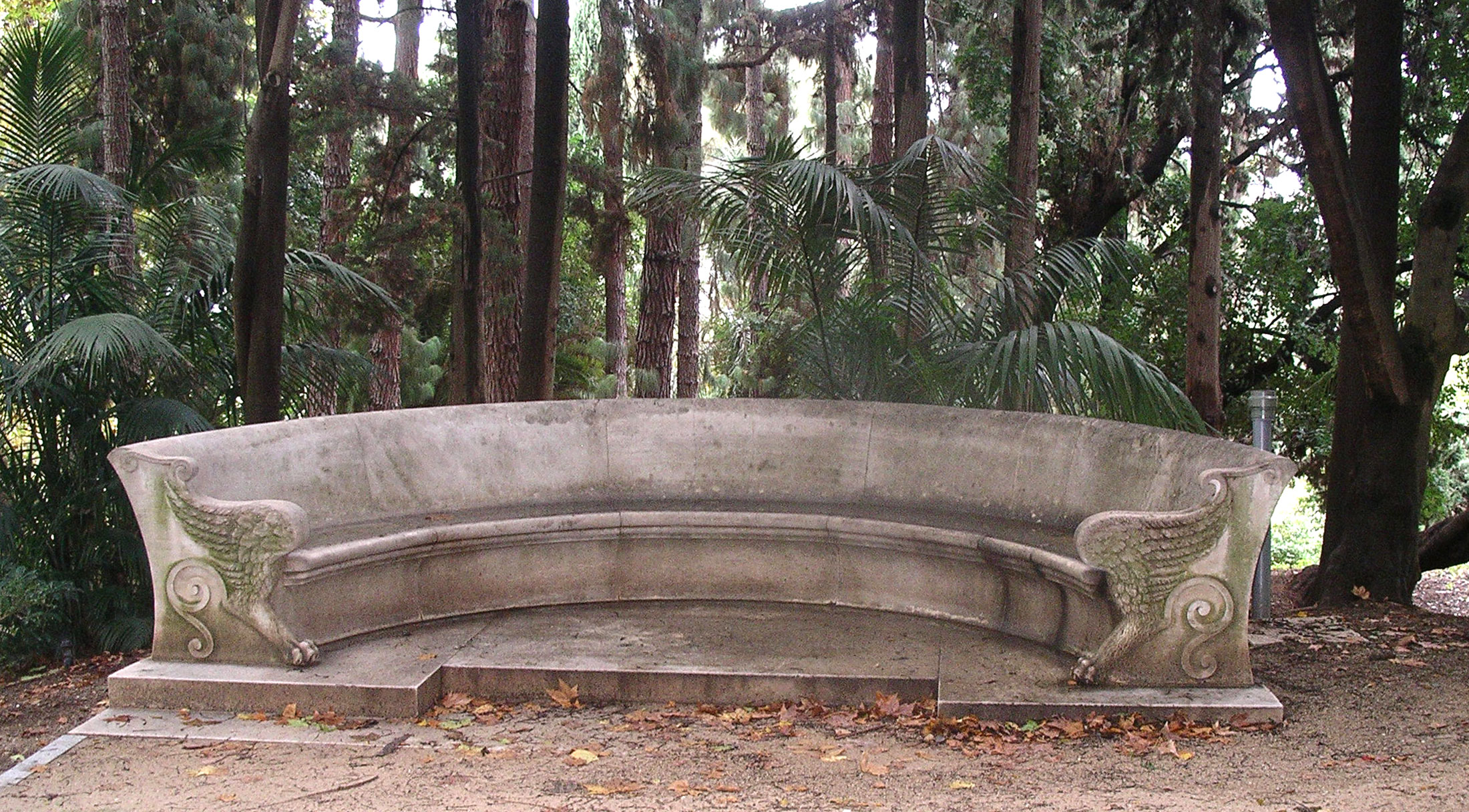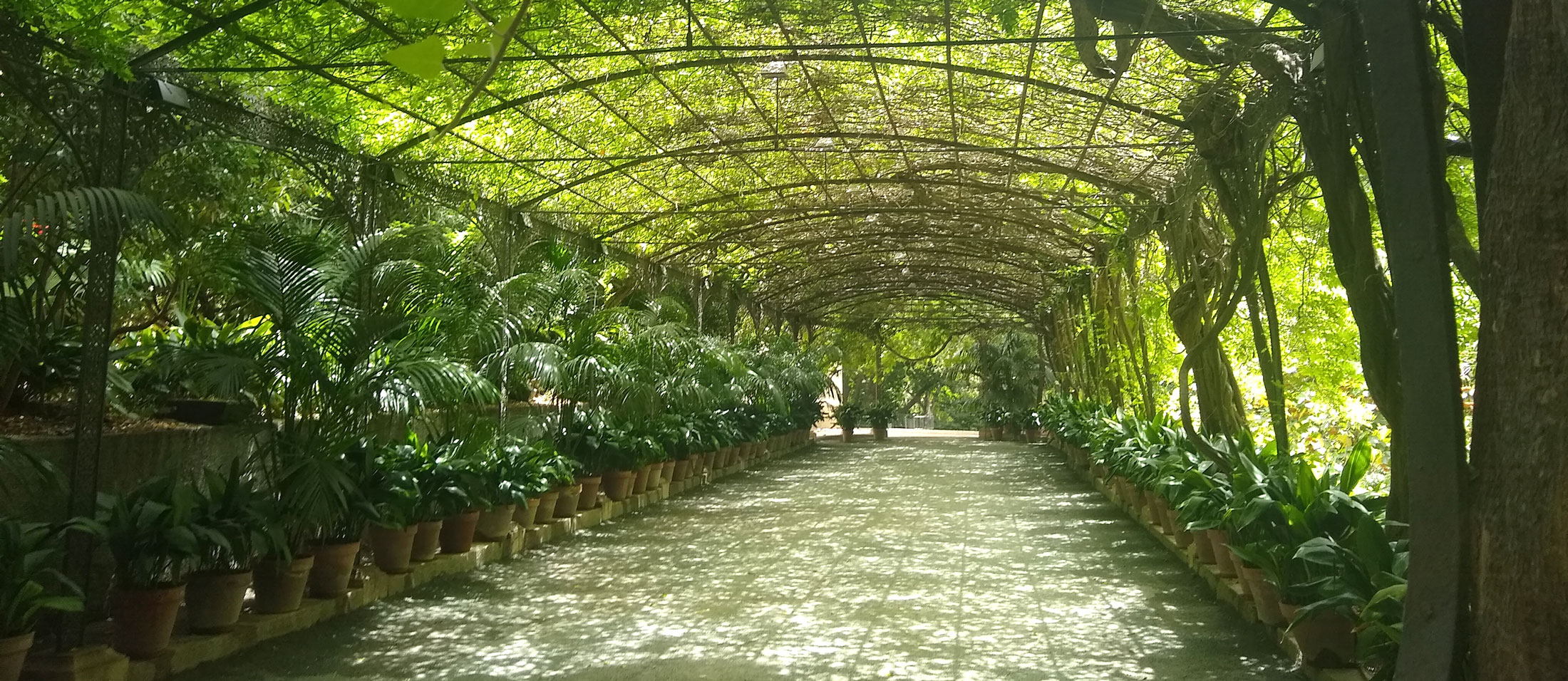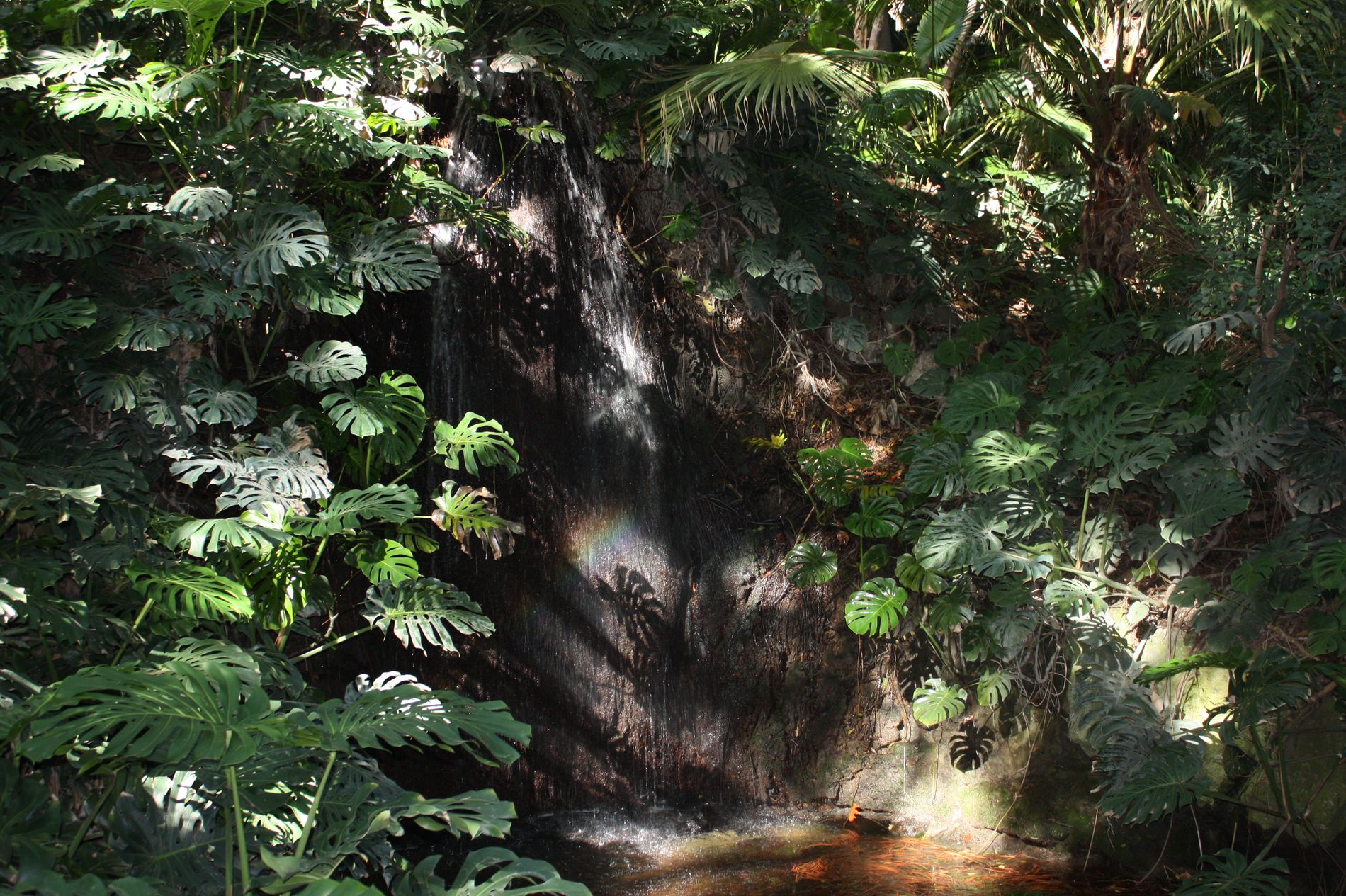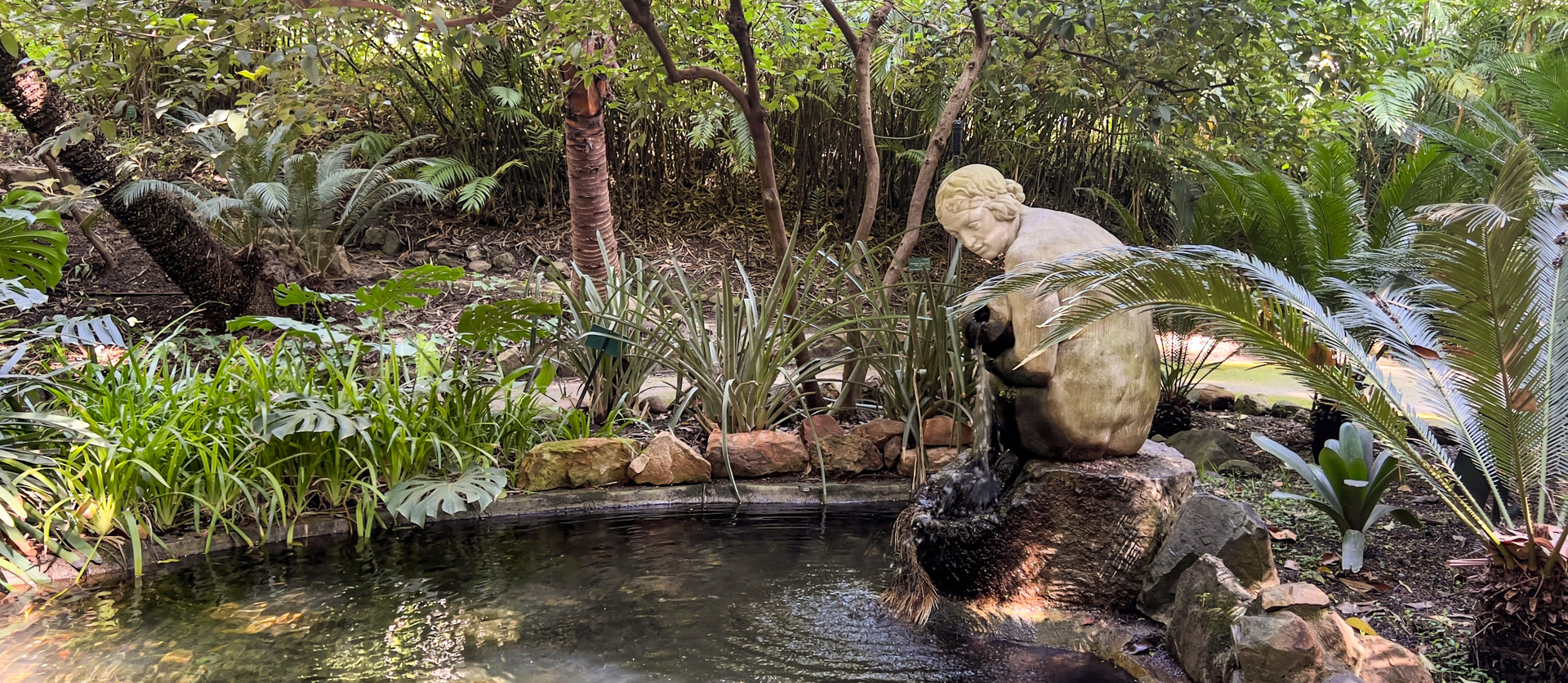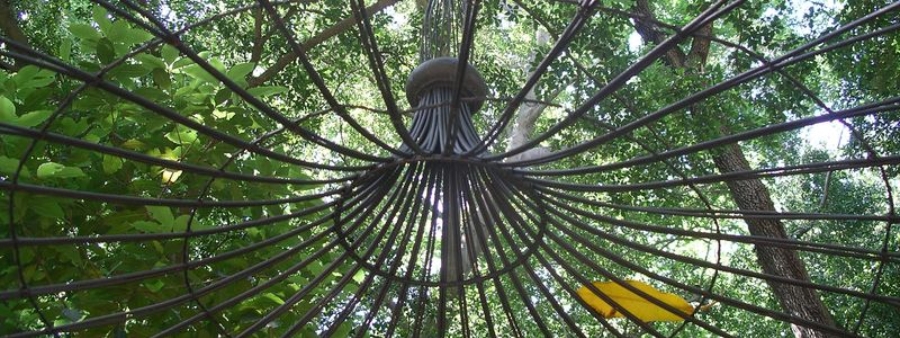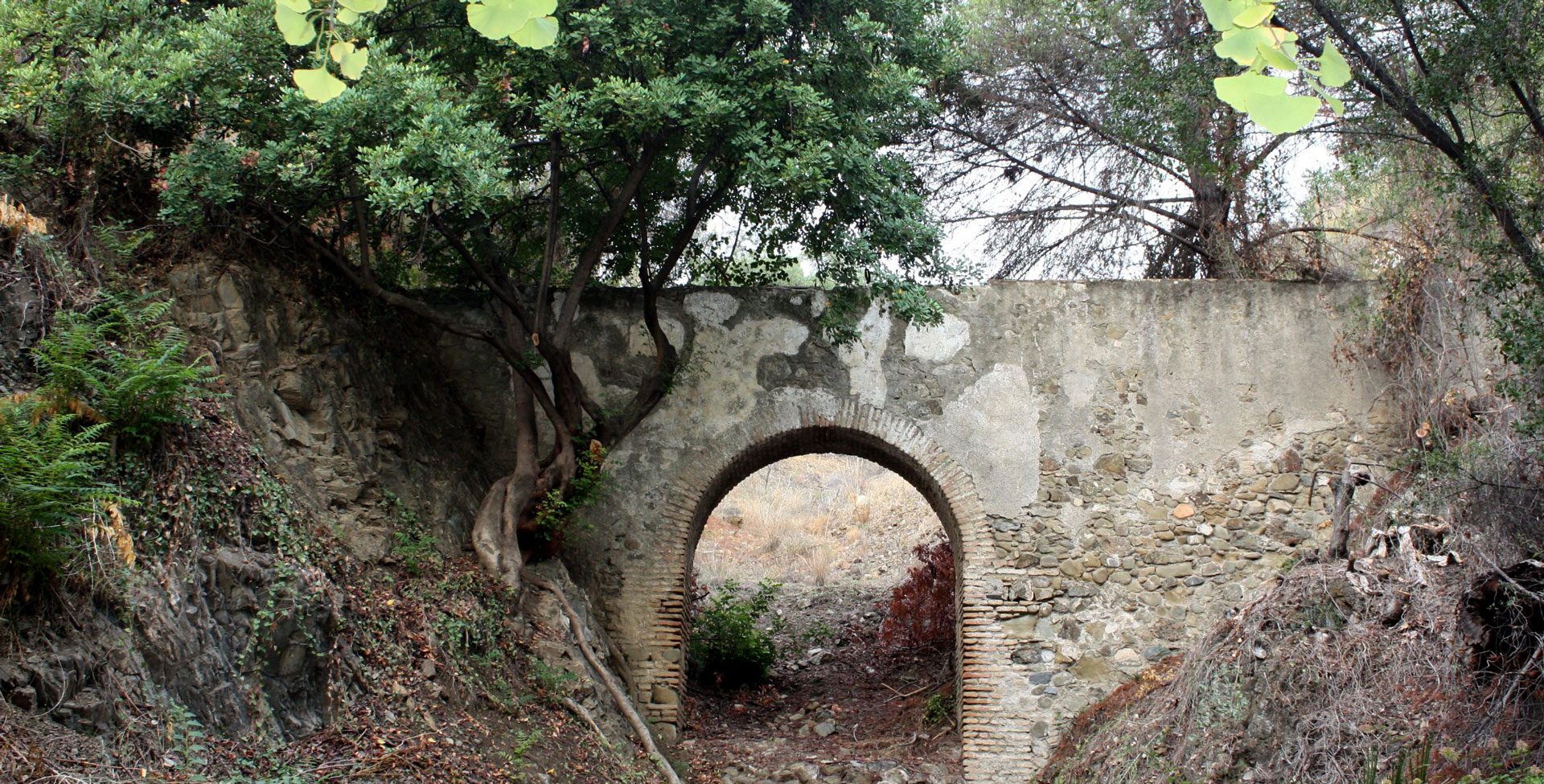Charming corners
Located opposite the famous Loring Museum, this bench was designed in classical style and inspired by a similar structure created by the German architect Schinkel. Such benches were common in 19th-century landscaped gardens, which often featured references to the classical world. Over the last century and a half, numerous celebrities have sat for portraits here during their visit to La Concepcion.
Built by the Heredia family, this is one of the most beautiful iron pergolas to be found anywhere in Spain. The plant which covers it (Wisteria sinensis), a creeper belonging to the Fabaceae family, is originally from China. The twelve roots originally planted by the Loring-Heredia family back in 1857 now climb over the surrounding ficuses and palms up to heights of almost 20 metres. Its gentle aroma and bunches of lilac flowers create a magical atmosphere, turning this spot into a unique enclave that can be enjoyed for about a fortnight in late March and early April.
From 1911 onwards, the estate's second owners, the Echevarria-Echevarrieta family, added a series of new landscaped areas, among them the features known as the Nymph's pond and water jump. The sculpture after which they are named was the work of Valentin Dueñas. The jump is fed by a watercourse at its centre which in turn is supplied by a grotesque-style fountain located above it.
San Telmo Aqueduct
The water supply of Malaga has been one of the most serious problems the city has had since ancient times. In 1782, at the request of Bishop Molina Lario, the architect Aldehuela Martin began working on the San Telmo Aqueduct, because the work of hydraulic engineering was considered very important in the eighteenth-century Spain.
Over 10 km of route from its outlet from the River Guadalmedina, with 33 bridges and 30 aqueducts, reaching its destination by gravity.
In 1788 he authorized the supply to La Concepción. Here one can see part of the branch that supplied water to the farm prior to the garden.
As La Concepción strives to keep water usage in its gardens to a minimum, a reservoir was built in the upper section of the estate to collect both precipitation and excess water filtering from the neighbouring El Agujero dam.
Every day, thanks to this small reservoir, water flows through the streams, ponds, cascades and pools of the historical garden until it reaches a large lake situated at the foot of the hillside on which La Concepción stands.
The lake is fed by the water which circulates around the garden and also the irrigation surplus that accumulates in its channels and gutters. During the night, this water is returned to the reservoir with the aid of a pump, and is ready to embark on its daily journey once again the following morning.
Water recycling
The garden has a closed circulation system, with the waters of its cascades and streams flowing into a lake located in the lower area of the estate. During the night, this water is returned to a reservoir situated in the upper section of the garden, the Forest Route, with the aid of a motor. This means of recycling ensures efficient usage and minimal wastage of water.

